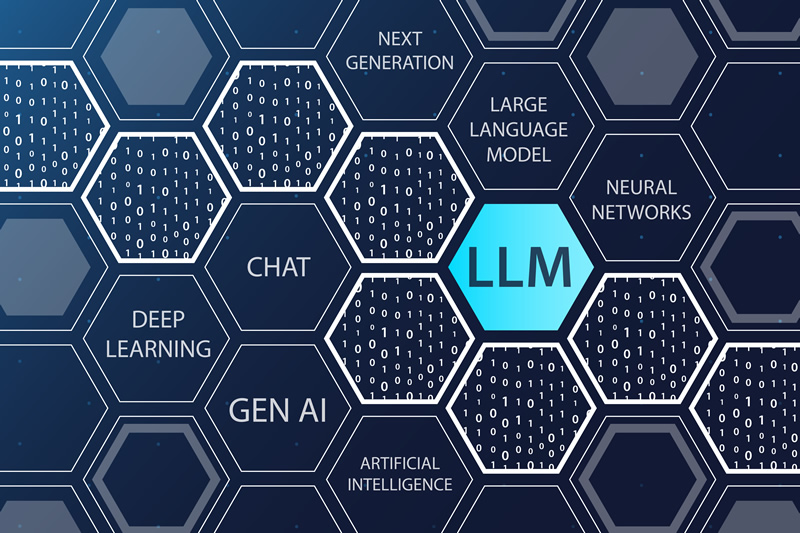The integration of advanced machine learning models has become pivotal in enhancing various aspects of technology. This article explores the impact of both Large Language Models (LLMs) and Large Learning Models (LLMs) on making translation services more accessible, shedding light on their contributions to user experience enhancement and bridging linguistic gaps on a global scale.
The Rise of Large Learning Models
Large Learning Models, characterized by their extensive parameterization, have witnessed widespread adoption across diverse domains. These models, which include Large Language Models, exhibit superior capabilities in understanding and processing complex patterns within data. Their applications extend beyond language processing to include image recognition, reinforcement learning, and other tasks.
Enhanced User Experience: A Unified Approach
Large Learning Models, including Large Language Models, contribute significantly to enhancing user experience in translation services. Traditional tools often struggled with context, producing translations that lacked fluency and naturalness. Large Learning Models, with their ability to grasp intricate patterns, offer a unified approach to address these challenges.
By considering context, semantics, and linguistic nuances, both Large Learning Models and Large Language Models generate more accurate and contextually appropriate translations. The result is a smoother and more intuitive user experience, minimizing language-related frustrations and facilitating seamless communication.
Bridging Linguistic Gaps: Beyond Language Models
The primary objective of translation services is to bridge linguistic gaps, and Large Learning Models play a crucial role in achieving this. Beyond the specific capabilities of Large Language Models, which are tailored for language-related tasks, Large Learning Models in general contribute to more authentic and culturally sensitive translations.
Large Learning Models excel in capturing not only linguistic nuances but also broader contextual information, including cultural idiosyncrasies and industry-specific terminology. This broader understanding enhances the quality of translations, fostering a deeper connection between individuals from diverse linguistic backgrounds.
Multilingual Capabilities: A Comprehensive Approach
One of the strengths of both Large Learning Models and Large Language Models lies in their ability to handle multiple languages. This comprehensive multilingual support ensures inclusivity and accessibility for users communicating in less commonly spoken languages. The versatility of these models further strengthens their potential to break down linguistic barriers on a global scale.
Real-time Translation: A Shared Advancement
The demand for real-time communication is ever-growing, and both Large Learning Models and Large Language Models contribute to achieving this in translation services. By enabling real-time translation, these models facilitate instant communication between individuals who speak different languages, whether in business negotiations, international conferences, or casual conversations.
Applications in Specific Industries: A Diverse Impact
The accessibility impact of both Large Learning Models and Large Language Models extends beyond general communication to specific industries such as healthcare, legal, and education. In healthcare, accurate translation of medical information is critical for patient care. Both types of models ensure effective communication between medical professionals and patients, regardless of their native languages.
Legal documents, contracts, and educational materials also benefit from the advanced language understanding capabilities of Large Learning Models. These models contribute to accessibility in these industries, facilitating cross-cultural collaboration and knowledge dissemination.
Challenges and Ethical Considerations: A Shared Responsibility
While the positive impact of Large Learning Models and Large Language Models in translation services is evident, addressing challenges and ethical considerations is crucial. Issues such as bias in training data, privacy concerns, and the potential for misuse must be carefully navigated to ensure responsible and inclusive applications of these models.
Summarizing
The fusion of Large Learning Models and Large Language Models has reshaped the landscape of translation services, making them more accessible and efficient. From enhancing user experience to bridging linguistic gaps on a global scale, these models collectively contribute to breaking down barriers in communication.
As technology continues to advance, it is imperative to harness the potential of both Large Learning Models and Large Language Models responsibly, ensuring they play a constructive role in creating a more connected and inclusive world. Through a unified and careful approach, we can leverage the capabilities of these models to foster meaningful global communication and collaboration.
Powerling and TrueLanguage are at the forefront of this fusion. Leveraging the latest advancements in machine learning and natural language processing, we are pioneering the integration of these sophisticated models to enhance our translation services. By incorporating the capabilities of LLMs and LLMs, we are providing clients with cutting-edge solutions that deliver more accurate, context-aware translations, ultimately breaking down linguistic barriers and fostering seamless global communication.


